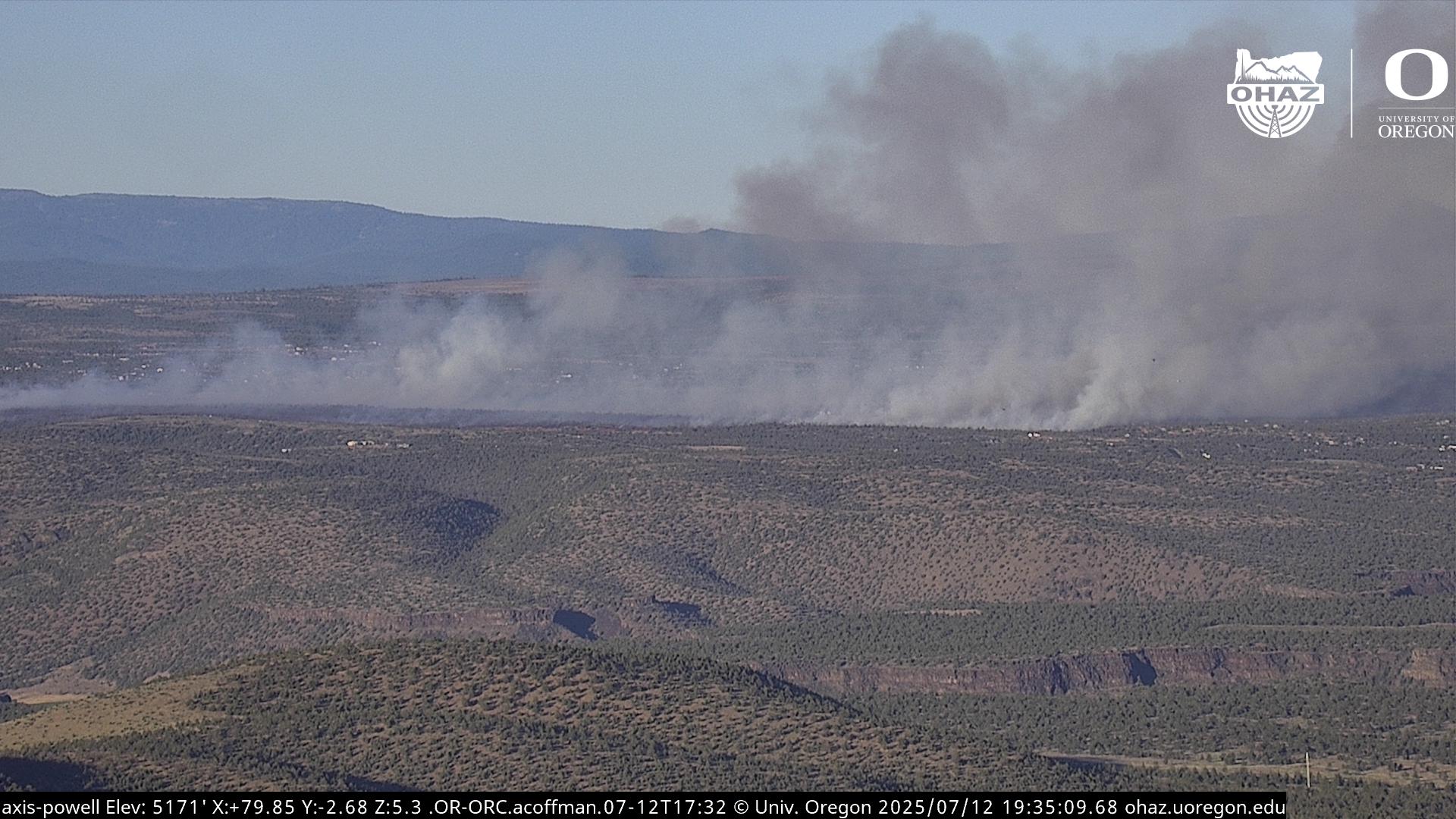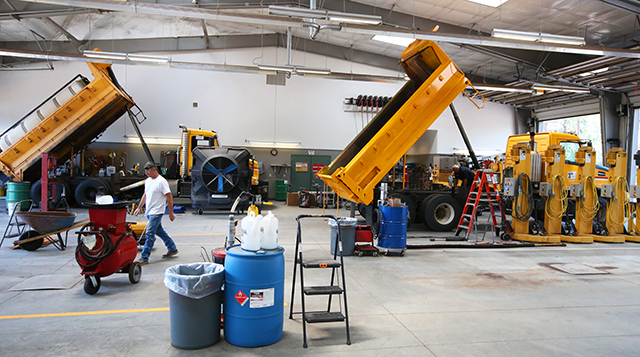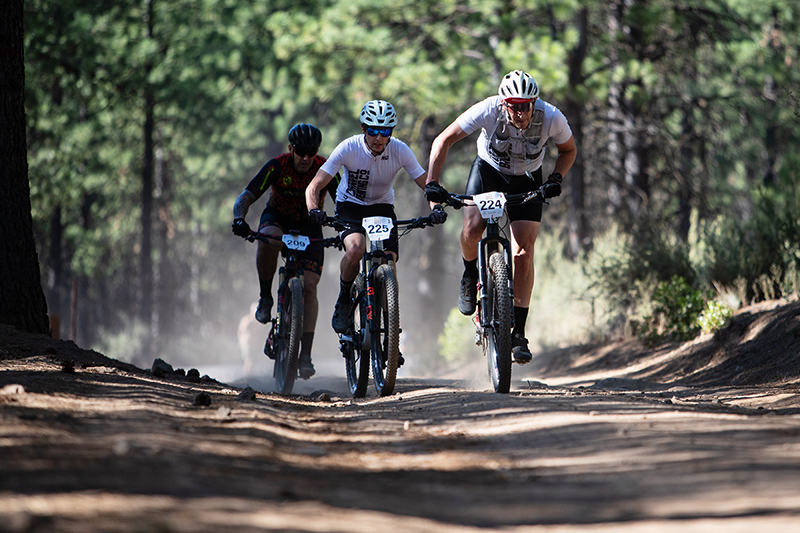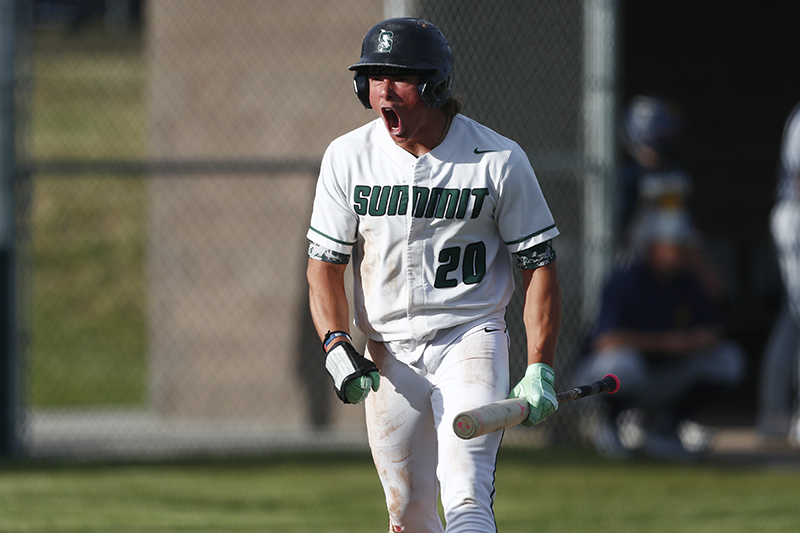The jewel of Lake Washington
Published 12:00 am Sunday, September 6, 2015
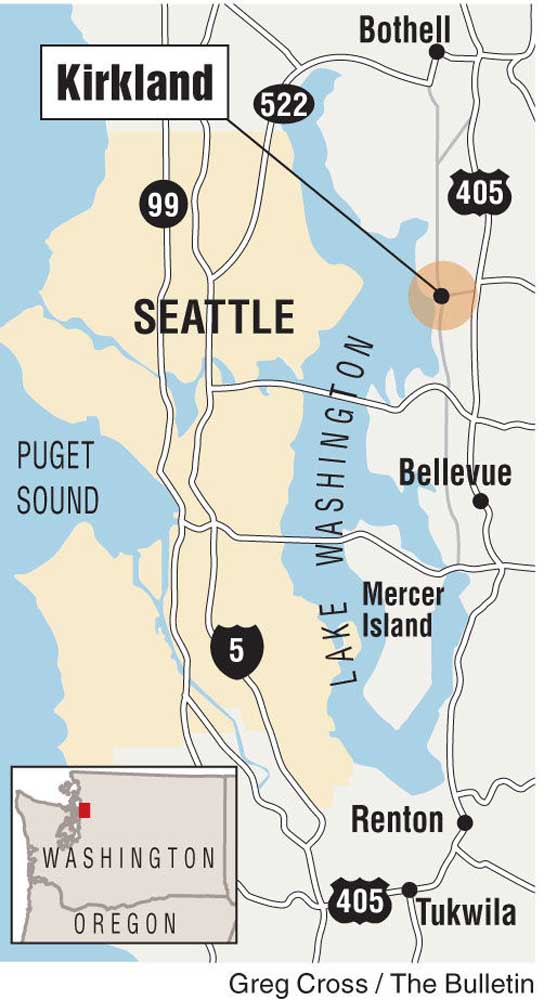
- The jewel of Lake Washington
KIRKLAND, Wash. —
Seattle’s back porch is Kirkland’s front door.
Trending
As the Pacific Northwest’s largest city, Seattle extends its view to the west, across Elliott Bay. Its lofty downtown office buildings and colorful tourist attractions are all within an easy glance of the ferries that cross saltwater Puget Sound.
Yet all along the east side of the city is beautiful Lake Washington, which at 22 miles is longer than Seattle itself. It’s largely an afterthought to the big city’s 670,000 residents.
This fact isn’t lost on Kirkland, a Bend-sized suburb on Lake Washington’s northeastern shore. Indeed, while other bedroom communities around the lake (Bellevue and Renton, for instance) tend to be more inwardly focused, Kirklanders have developed a charming lakeside downtown district that invites the outdoors into their everyday lives.
It isn’t Europe, but especially in summer, there’s a sense of frivolity in the sidewalk cafes and bars, the small boutiques and galleries that line the streets wrapping around Marina Park and extending south to Carillon Point. Bicycles and sailboats are among the preferred methods of transportation for those who don’t merely walk from place to place.
Nowhere else on freshwater Lake Washington — gouged by Pleistocene glaciers and linked to Puget Sound by the 8-mile Lake Washington Ship Canal though Seattle — is there a community so wedded to the water. Fourteen separate city parks are spaced along the 7 miles of shoreline between Kenmore, to the north, and Bellevue, to the south. On most warm summer afternoons, every one of these parks is busy not only with school-age children, but also with mothers and toddlers, and often with young executives who have shed their jackets and ties and left their offices early for kayaks and sand volleyball courts.
Downtown delights
Trending
The best place to begin a tour of Kirkland’s particular charms is Marina Park, flanking a small cove where Kirkland Avenue and Central Way meet the lake, about a mile west of Interstate 405, Exit 18.
Through September, the Kirkland Wednesday Market draws a couple of dozen area farmers and artisans to the crescent-shaped park, where they sell their produce and crafts at well-attended booths from 2 to 7 p.m.; musicians perform before a cluster of enthusiastic fans.
At the south end of the park is the Kirkland City Dock, from which Argosy Cruises depart on circuits of Lake Washington, two or three times daily from Memorial Day to Labor Day. The 90-minute cruises twice pass beneath the Evergreen Point Floating Bridge (constructed in 1940 and known as the world’s longest floating bridge) during tours that extend to the University of Washington’s Husky Stadium campus and to lakefront manors — such as that of Microsoft founder Bill Gates — in exclusive enclaves near Bellevue.
In Marina Park are three of the 19 popular sculptures, owned by the city of Kirkland, located around the community. Stanley Bleifeld’s “Home Coming,” at the foot of the dock, commemorates Kirkland’s importance as a World War II-era port for ship building. My favorite sculpture, only a couple of blocks east of here, is Brad Rude’s “Cow and Coyote.” Formerly in Seattle’s Pioneer Square, it was moved to Kirkland in 2002 and now is often decorated for holidays and special events.
The blocks of Lake Street extending south from Central Avenue are the city’s busiest. Shops like Asher Goods and the Lulu Boutique, men’s and women’s retailers; Herban Wellness, an herbal apothecary; and the Boo Boo Barkery & Boutique, a canine specialty store, are among the small, locally owned businesses.
There are restaurants and bars galore. One of the newest and most popular is Bottle and Bull, whose name, menu and cocktail list were inspired by the works of novelist Ernest Hemingway. Large windows open to the sidewalk as diners sip on Spanish-style tapas, Parisian gnocchi and Ecuadorian prawns.
Down the block, Hector’s may be Kirkland’s most spacious restaurant, with ample dining around a central bar and a large outdoor patio featuring regular live music. There’s also occasional music at Maison DeLille, a private wine bar that pours vintages from Washington’s outstanding DeLille Cellars. Almost downstairs is the Flatstick Pub, noted for its two dozen Washington beers and ciders on tap, and its indoor miniature golf course. Nearby, also on Lake Street, is Lady Yum, a unique and colorful champagne-and-macaroons establishment.
The art of dining
Park Lane, which meets Lake Street near its heart and extends east two blocks to Peter Kirk Park, has just been redesigned as a pedestrian way: The ribbon-cutting took place in mid-June. Free of sidewalks, Kirkland’s “festival street” is being developed as a showcase for the arts. Two fine coffee shops, including Caffe Rococo, lend their patios to the open-air spirit. Down the block, Simplicity Décor specializes in interior design, and its sister store, Simplicity ABC, is a particular delight for those with young children.
One block away, the esteemed Heathman Hotel anchors the downtown end of Kirkland Avenue. A sister to Portland’s famed Heathman, the four-story Kirkland lodge was built in 2007 and remodeled in 2012. The luxury boutique property, a favorite of business travelers, has a mere 91 rooms with great amenities.
Its undeniable highlight is its restaurant, Trellis. For that, credit is due to chef Brian Scheehser, who opened the Kirkland hotel restaurant after 10 years as executive chef at the Hunt Club in Seattle’s classy Sorrento Hotel. A former James Beard Award nominee for “best chef Northwest,” Scheehser tends his own 18-acre vegetable farm in nearby Woodinville, making Trellis the ultimate farm-to-table restaurant. He also makes his own cheese and wine.
With that in mind, he is able to serve a “2 Hour Salad: Out of the ground at 3 p.m., on your plate at 5 p.m.” His heirloom tomato salad and duck breast (with poached pear and brandied cherry) are two of the best dishes I’ve had in the Seattle area.
A block east, the Kirkland Performance Center is a 402-seat theater that presents a wide range of entertainment, including concerts and dance performances, lectures and classic children’s plays.
Just north of downtown, the Kirkland Arts Center — in the 1892 Peter Kirk Building, considered a Victorian-Romanesque treasure — places as much emphasis on teaching the arts as on showcasing them. Its museum recently was closed to install a new exhibit, but I was able to peek into the ceramics studio, where instructors and students were hard at work. Exhibits cover a range of work by local, regional and national artists, with a special interest in printmakers.
South of downtown, where commerce gives way to residences, Lake Street becomes Lake Washington Boulevard. A gauntlet of small parks and private docks leads a mile and a half to Carillon Point, the location of Kirkland’s other major hotel, the Woodmark.
Guests to the Woodmark are greeted by its director of “barketing,” an affable black lab named Meg. The 100-room hotel is decidedly pet-friendly. Most rooms offer a view to the lake across a high-end marina, its slips filled with luxury yachts and ocean-going sailing vessels. Jet skiers weave between the docks, and a concessionaire rents kayaks and paddleboards. Within the Woodmark, the high-end Bin on the Lake is a popular dinner destination, and the Beach Café serves three moderately priced meals a day.
The greater Carillon Point complex is a mixed-use development, with professional offices, condominium residences, additional restaurants, an athletic club and the Woodmark’s outstanding Still Spa. The bells themselves — six cylindrical towers on a central plaza and a single ground-based bell — chime hourly during daylight hours.
Facing the future
Today, rapidly growing Kirkland is faced with the looming challenge of how to progress while maintaining the unique charm that has made it a favorite weekend getaway for Seattle-area residents and business visitors.
According to 2010 census figures, it wasn’t long ago that the town had a population of fewer than 50,000. Now, after the annexation of several nearby unincorporated neighborhoods, and an influx of a young, hip, multi-ethnic citizenry, the population is approaching 90,000. The median age of citizens is 40; the median income is $85,000, according to city statistics.
Homesteaded in the 1860s and ’70s, Kirkland became a municipality in the late 1880s, when British-born entrepreneur Peter Kirk and Seattle Post-Intelligencer owner Leigh Hunt collaborated to form the Kirkland Land and Development Company. They purchased thousands of acres of lakeside land, where downtown now stands, and built a steel mill in anticipation of the completion of the Lake Washington Ship Canal. Although the mill closed before the canal was completed, Kirkland survived with a large woolen mill, a ferry-construction business and the warship factory that produced 25 battleships during World War II.
With the more recent growth of adjacent Bellevue and Redmond, the home of Microsoft and other high-tech businesses directly east, Kirkland has become a “bedroom community” not only to Seattle, but to its nearer neighbors. Yet it has its own industrial base, as well.
Costco was established here and made its home in the city for many years before relocating to a larger campus in Issaquah; its “Kirkland Signature” brand persists. Trucking giant Kenworth is based in Kirkland, the Japanese-owned Nintendo company has its American headquarters in Kirkland and internet giant Google, already one of the city’s largest employers, expects to double its local impact with a 180,000-square-foot expansion now underway.
One of several projects intended to keep pace with urban growth is Kirkland Parkplace, which projects residential, office, entertainment and retail a short walk east of the Heathman. It’s buffered from downtown by 12-acre Peter Kirk Park, home to sports fields and courts, the Kirkland library and municipal swimming pool, a community center and a teen center.
Currently in the design phase, Parkplace foresees a mixed-used, pedestrian-oriented community with tree-lined streets and landscaped open plazas and courtyards. A height limitation will ensure views of Lake Washington from all corners of the complex.
Around town
Kirkland is far more than its downtown core. The city acknowledges 15 separate neighborhoods. Many of them are easily accessible by foot or bicycle on the Cross Kirkland Corridor, a “rails-to-trails” passage that extends 5.75 miles through the city on a former Burlington Northern-Santa Fe Railroad track.
I rented a bicycle for a day from Kirkland Bicycles, next door to the Heathman, and rode along the crushed-gravel track from downtown, northeast to the Totem Lake district, then west to Juanita before returning to the urban hub. The Corridor is a beautiful project, opened just nine months ago after three years of development. Wherever the track crosses a street, as it does 11 times, the gravel turns to pavement, and crosswalks and pedestrian beacons assist safe transit. Modern log fences line many sections of the Corridor.
Like downtown Kirkland, Totem Lake is anticipating major changes. Three miles west of the Woodinville wine country, it has a large but rapidly aging shopping center (built in 1973) and several franchise motels around its periphery, including a Comfort Inn and a Courtyard Marriott. Now in the works is a major redevelopment of the 26-acre site, to be known as The Village at Totem Lake.
I understand that the new center will honor the wetland that surrounds its namesake, tiny Totem Lake. Little more than an oversized lily pond, the lake is flanked by a trail and boardwalk that give city dwellers views of a variety of waterfowl in their natural dwelling areas.
In Juanita, about 3 miles west from Totem Lake via NE 116th Street, I discovered a neighborhood that developed on its own in the 19th century, and only later merged with Kirkland. It’s especially notable for two wonderful parks and one of the most acclaimed restaurants in the Seattle metropolitan area.
Juanita Bay Park, a marshy 144-acre wildlife habitat located where Forbes Creek enters spoon-like Juanita Bay, may be explored along a comfortably wide, mile-long boardwalk that extends north of Market Street. On either side of rotting dock pilings that once served cross-lake freighter traffic, you may see hawks, herons and warblers, turtles and, if you’re lucky, beavers.
Juanita Beach Park, at the head of the bay, has perhaps the best beach along this entire stretch of Lake Washington. Swimming is the most popular activity, but there are tennis and volleyball courts, horseshoe pits, a fishing area and extensive picnic grounds.
Two blocks from the park is the beloved Café Juanita, which reopened in July after an extensive remodel. It was established in 2000 by chef Holly Smith. She remains at the helm, driven by a desire to prepare seasonal ingredients in the style of northern Italy with a particular Pacific Northwest flair.
Since being honored as the James Beard Society’s “best chef Northwest” in 2008, Smith has three times been nominated as the outstanding chef in the entire United States, most recently this year.
Kirkland, similarly, has been named one of the top five places in the country to live by “Money Magazine.” Urban leaders would be happy to be known as No. 1.
— Reporter: janderson@bendbulletin.com


